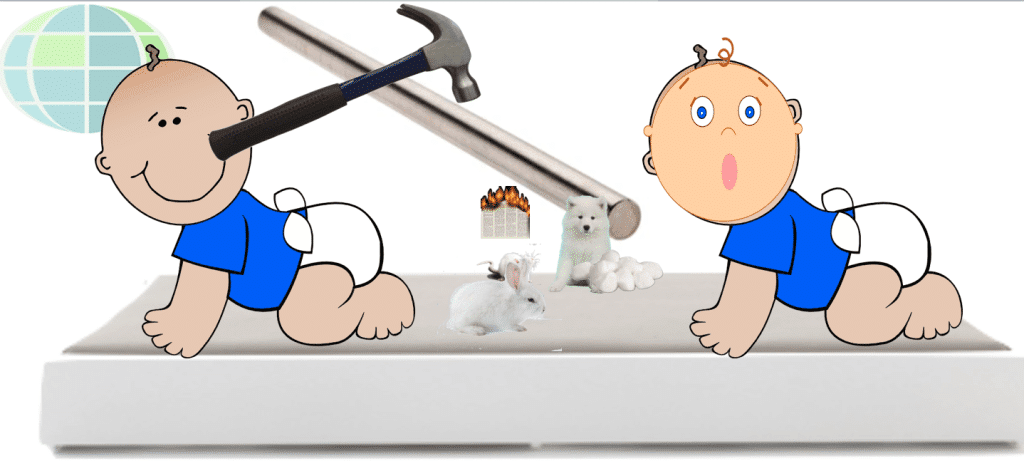NLP and Classical Conditioning
The Little Albert Experiment gives us a good introduction to how the human body and mind work together to deliver automatic responses to our environment and how to change our responses if we are minded to do so.
NLP offers techniques to help people to overcome phobias, better understand behaviour, rid themselves of bad habits and create excellence. One of the most magical and mystical NLP techniques is NLP Anchoring. Anchoring is great and you should learn NLP Anchoring.
The Little Albert Experiment gives a good introduction to Anchoring in NLP, helping you to relate it to terms like Classical Conditioning and Stimulus Generalisation from the world of psychology.
I will use it also to help you to recognise how useful conditioning can be and also how destructive uncontrolled Anchoring and conditioning can become.
Little Albert Experiment
The Little Albert Experiment took place in the early 20th century and was conducted by John Watson and his student, Rosalie Rayner of Johns Hopkins University.
The aim of Watson and Rayner was to condition (programme into the nervous system) a phobia in an emotionally stable infant, known as Little Albert. Albert was nine months old at the time of the experiment.
The experiment started with a series of tests. Albert was presented with a number of furry animals and objects to observe. a white rabbit, a white rat and a dog. Observers noted that Albert showed no fear of any of them.
The Experiment
Following the testing they began the experiment.
Albert was placed on a mattress in the middle of a room. They placed a white rat near Albert and Albert was encouraged to play with the rat.
Each time Albert touched the rat they struck a steel bar with a hammer, making a loud noise. Albert responded to the noise by crying and crawling away.
Following this Albert was presented only with the rat and he got very distressed. He had apparently begun to associate the loud noise with the rat. When presented with the rat Albert’s nervous system anticipated the loud noise and responded as if it had occurred, the unconscious response was fear. This is his nervous system telling him to “GET OUT OF THERE!”
Stimulus – Neutral to Conditioned
Initially the rat was a neutral stimulus – there was no fear.
The Drs used their knowledge that typically loud noise elicited a fear response in children so that the rat became a conditioned stimulus which elicited a response which was fear. Fear became the conditioned response.
Generalisation – In later experiments Albert appeared to generalise his response as he became fearful of other furry objects in the same way as he did the rat.
Albert had developed a phobic reaction to furry animals and objects through a process of conditioning.
Now, I’m not sure if this type of experiment meets my definition of ‘being ecological’ or ethical and I’m sure it would not be allowed in this form today.
Imagine someone asking you “Do you mind if I borrow your child for a bit so that I can give him a phobia of furry objects and animals that he might have for the rest of his life?”
It just wouldn’t happen. However it was very useful for behavioural psychologists and helpful to us even a century later to understand better the link between stimulus and response that creates phobias and desired and unwanted behaviour. It also give us clues as to how to use the conditioned response method to improve lives!
Overcoming the phobia
Happily it was reported that by repeated exposure to the stimulus (furry animals and objects) without the loud noise being created Albert recovered from his phobia. The fear response was strategically unconditioned or reconditioned to leave him playful and happy in their presence.
Reconditioning unwanted phobic responses and other non-useful automatic responses is one of the techniques used in NLP by Practitioners to assist people in living more serene lives and having better responses to their environment.
[fusion_youtube id=”yWB_Cacy3PE” alignment=”center” width=”” height=”” autoplay=”false” api_params=”&rel=0″ hide_on_mobile=”small-visibility,medium-visibility,large-visibility” class=”” css_id=””][/fusion_youtube]

